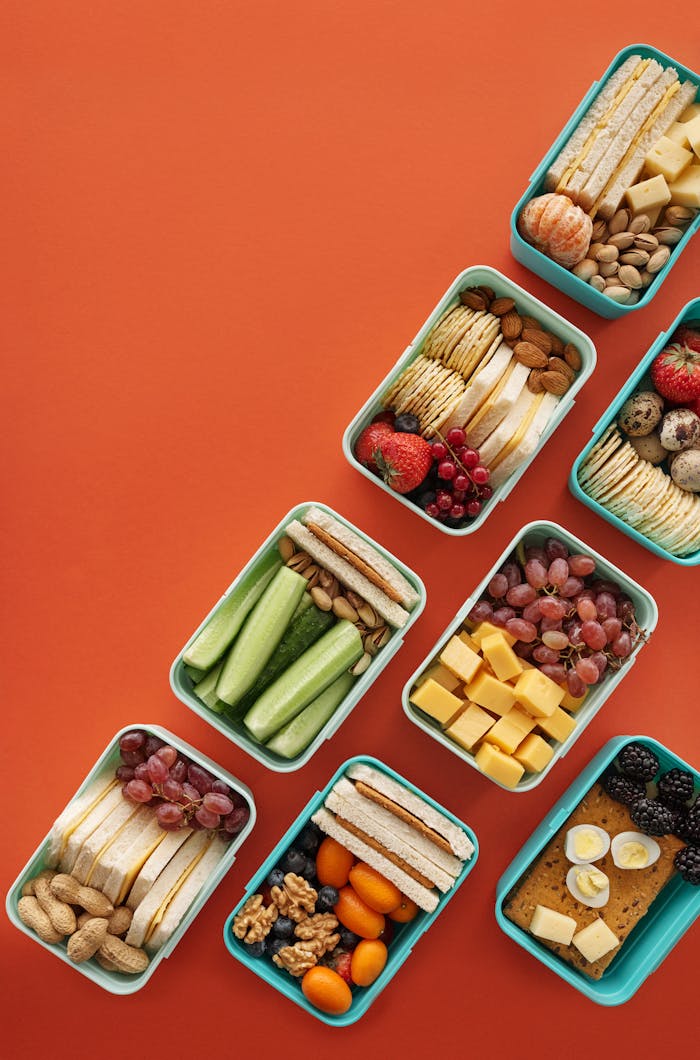In a world that demands constant movement—commutes, business trips, kids’ activities, social commitments—sticking to a healthy eating plan can feel impossible. Yet with a few smart strategies, you can turn travel days, long workweeks, and spontaneous outings into opportunities, not obstacles, for nourishing meals. Here’s how to build a meal‑planning routine that thrives even when you’re on the move.
1. Packable Power Meals
- Overnight Oats in a Jar
Combine rolled oats, milk (dairy or plant‑based), chia seeds, and fruit in a small Mason jar. Store in the fridge overnight and grab it as you head out the door. - Portable Grain Bowls
Layer cooked quinoa or brown rice, roasted vegetables, and a protein (chicken, tofu, or beans) in a leak‑proof container. Add dressing on the side to keep greens crisp. - Energy Bites & Bars
Whip up homemade no‑bake snacks from oats, nut butter, honey, and mix‑ins like seeds or dried fruit. Store in small zip‑lock bags for quick fueling between meetings.
2. Smart Grocery Shopping for Travel
- Choose Dual‑Purpose Ingredients
- Eggs: Hard‑boiled for snacks, scrambled for breakfast burritos.
- Rotisserie Chicken: Shreds easily into salads, wraps, and grain bowls.
- Invest in Quality Containers
- Leak‑proof, compartmentalized meal boxes keep components separate and fresh.
- Insulated lunch bags and small ice packs maintain safe temperatures.
- Stock Up on Shelf‑Stable Staples
- Whole‑grain crackers or rice cakes, single‑serve nut butter packets, canned tuna in water, and protein-rich trail mix.
3. Dining Out Without Derailing
- Scout Menus Ahead of Time
Many restaurants post nutrition information online. Identify grilled proteins, vegetable‑heavy sides, and dressings on the side before you go. - Half‑Plate Veggies Rule
No matter the cuisine, aim for at least 50% of your entrée to be vegetables—ask for extra steamed or side‑salad substitutions. - Mindful Portions
If entrée sizes are large, split with a colleague or box half to enjoy later as a balanced lunch or dinner.
4. Building a Flexible Weekly Framework
| Day | Morning Grab‑and‑Go | Midday Meal | Evening Reset |
|---|---|---|---|
| Monday | Greek yogurt + fruit cup | DIY grain bowl with chicken & veggies | Sheet‑pan stir‑fry for leftovers |
| Tuesday | Protein shake + banana | Veggie wrap with hummus | One‑pot chili in slow cooker |
| Wednesday | Energy bites & black coffee | Mason‑jar salad | Quick pasta with marinara & tofu |
| Thursday | Oatmeal to‑go | Leftover chili | Build‑your‑own tacos |
| Friday | Hard‑boiled eggs & an apple | Tuna‑avocado salad | Cauliflower rice stir‑fry |
- Morning Prep (10–15 min): Portion snacks, blend smoothies, or assemble jars before bed.
- On‑the‑Fly Lunches: Create modular meals that travel well—swap proteins and grains based on what’s left in the fridge.
- Evening “Reset” Cooking: Use your slow cooker or sheet pan to prep a big batch for both dinner and next‑day lunches.
5. Tech Tools & Shortcuts
- Meal‑Planning Apps: Many apps let you set “travel days” and suggest packable, low‑prep recipes. Sync with calendars to receive timely reminders.
- Grocery Delivery & Pickup: Schedule deliveries around your travel itinerary; use curbside pickup when you’re pressed for time.
- Voice‑Activated Lists: Use smart speakers or your phone’s assistant to add items to your grocery list hands‑free while driving or cooking.
6. Real‑World Tips for Lasting Success
- Embrace Imperfection: If you miss a planned meal, don’t ditch the rest of your day—make the next snack or dinner count.
- Stay Hydrated: Carry a refillable water bottle; dehydration can mimic hunger and derail energy levels.
- Prioritize Protein & Fiber: Both nutrients travel well and keep you feeling full longer, reducing the temptation of vending‑machine snacks.
- Reflect Weekly: Spend five minutes each Friday assessing what worked—swap out any meal that felt rushed or unappetizing.
By integrating these strategies—packable meals, savvy dining‑out tactics, a flexible weekly template, and supportive tech tools—you’ll find that even the busiest schedules can accommodate thoughtful, health‑focused meal planning. With a little preparation and creativity, “eating on the go” becomes not a compromise, but an extension of your commitment to well‑being.
